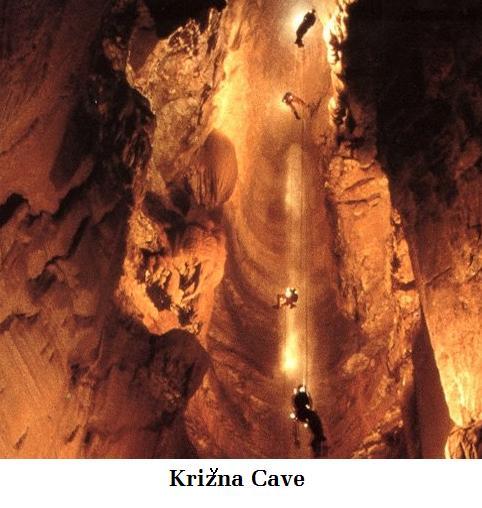

Please let me introduce myself, I am Bryan Adrian.
Like the writer of this tale, the Proteus newt is also very playful and agile with its appendages.
At one time long ago I use to believe in mermen and mermaids, Atlantis, and that real vampires inhabited human bodies which sprang out of the Egyptian pyramids after an intergalactic war. Resulting from a war, maybe not so different from the nuclear holocaust Israel and the current GW Bush Administration in the FEMA-USA are recklessly steering our planet towards now in 2003. The last such war had such an effect that all lifeforms on earth underwent radical mutations from chain reactions of volcanic eruptions and nuclear radiation winds, circa 3000 BC, give or take 500 years.
After my recent travels through Slovenia I still do believe in the unfathomably deep waterways that approach the very center of our earth in the form of solid and plasma cold diamantine water and in the mysterious creatures that live down at sub-tectonic plate depths that even our most sophisticated U.S. Naval Intelligence technology cannot even hope to reach in the next 500 years.
We shall perhaps remain forever, or for quite a long time more, as blind as bats to the clandestine presence of this still extant Atlantis. You may or may not still believe in vampires and alien androids deftly designed to seem like perfect yet normal humans by a former ultra-advanced alien presence, but after you read of my explorations below, you will walk away knowing that one of the great mysteries of our planet lies beneath the tectonic plates of the underground caverns of Slovenia, and other parts of the world too. You may even believe as I do, after I am finished with you here, that Slovenia is one of the most alluring countries of all of them.
Someday I hope to encounter one of the legendary and shapely Slovenian mermaids that have never yet been captured from these depths -- but that is another story -- now let me tell you now that I have your ears about the much debated "human fish".
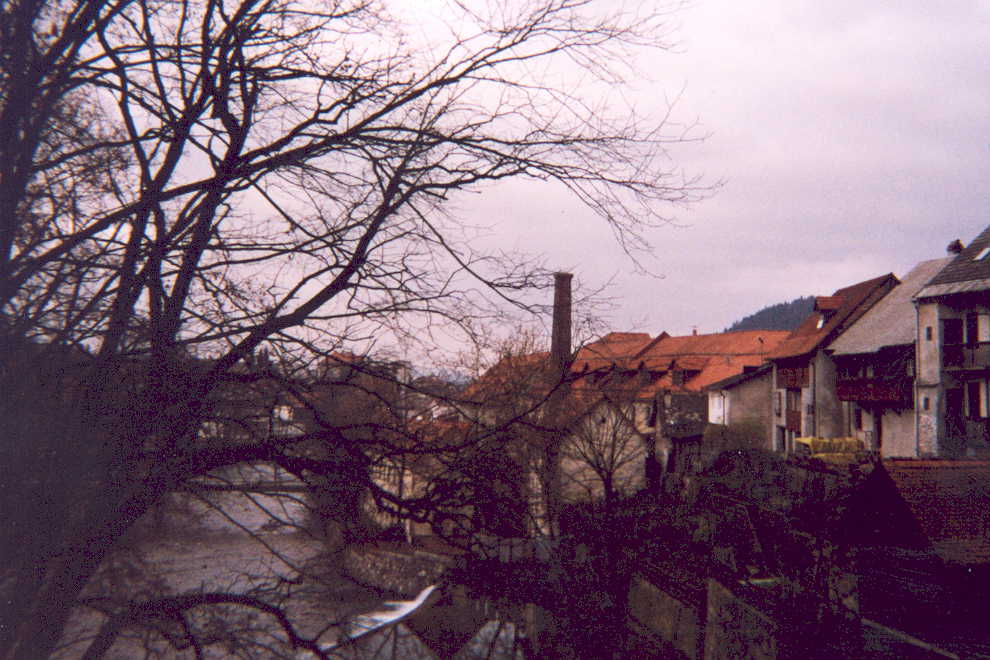
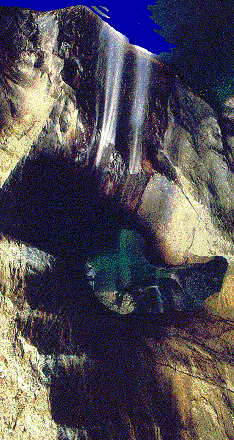
I will eventually tell you my fish story but must first mention another one of my favorite animals in the karst cave region [apart from the Proteus anguinus human fish]. It is the Karst Cave Bear which has been long extinct. They roamed here in Slovenia long ago and were at least 30% larger than today's black bear commonly found in Europe. Another striking and differentiating factor -- the Karst Cave Bear was by and large mainly vegetarian HERBIVORE, like a Panda Bear, or an Elephant or a horse.
The mysterious Postojna cave world is a part of Slovenia
that has been carved, shaped and created by water -- deep within these
world-famous caves hide the much loved and multitudinous Proteus anguinus human newts [No, Newt Gingrich is NOT one of them].
Other rare fauna, living and fossil, in these regions are guanobites and Schwagerina carniolica. On rare days these two exotic species are also found in the meteor-formed common caves of the Hungarian Villany mountains, and in the Crystal caves of Beremiend [also in Hungary], and in the Dolzan Gorge of Slovenia.
The 20-kilometre-long Slovenian underworld Postojna karst cave system is a wonder of life preserved in a vast and deep underground kingdom, with disappearing lakes and rivers that vanish overnight --and pop up far away --to the astonishment of land lubbers who discover a river when they awaken -- where there had never been one before [a not uncommon occurrence in this part of the world]!
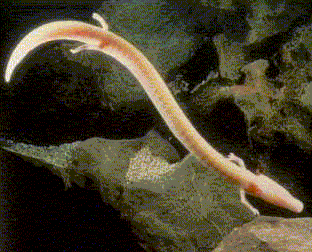
The Postojna caves are accessible without special equipment and they self regulate at a
constant temperature of about 10 degrees Celsius. Visitors are taken for a tour by a
special cave 'kiddy' train accompanied by experienced guides -- a visit takes only about an hour and a half.
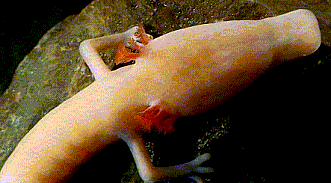
I have been informed that not only myself, but the Masonic German writer, Goethe, was gaga over the human fish too ... he even wrote a major work titled PROTEUS and he went on to have a form of METEOR ROCK named after himself.
As of yet, there is no VOLCANIC TUFA rock named after Goethe, regretfully.
Charles Darwin's interesting speculations on evolution are literally standing on their heads since the re-discovery of the PROTEUS human fish of ancient Slovenia, this 'Proteus anguinus,' the little devil! The little creature clearly defied Darwin's simple and linear and all so logical 'ten-step laundry lists' of evolutionary development [as opposed to better trained scientist Louis Agassiz, a contemporary of Darwin who enraged our bearded British scribbler endlessly, with his unrelenting opposing viewpoints].
For a moment let us take a very short break and read Darwin's words to Dr. Agassiz, with whom he had a global quarrel in his day, about the human fish, Proteus, and the caves of Slovenia:
"It would be most difficult to give any rational explanation of the affinities of the blind cave-animals to the other inhabitants of the two continents on the ordinary view of their independent creation. That several of the inhabitants of the caves of the Old and New Worlds should be closely related, we might expect from the well-known relationship of most of their other productions. Far from feeling any surprise that some of the cave-animals should be very anomalous, as Agassiz has remarked in regard to the blind fish, the Amblyopsis, and as is the case with the blind Proteus with reference to the reptiles of Europe, I am only surprised that more wrecks of ancient life have not been preserved, owing to the less severe competition to which the inhabitants of these dark abodes will probably have been exposed."
Darwin inexplicably became in our time the high priest of our scientific Priesthood of Evolution [no, I am not a Creationist, nor am I a monotheist, in any sense of the word whatsoever, quite the contrary, and especially NOT an Intelligent Design pitchman, so banish such thoughts -- I admire many hypotheses of Darwin's theory of evolution, but like L. Agassiz, I do not think Darwin was altogether infallible! He made some valuable contributions and helped to get away from Biblical dogma in explaining how we all got here].
FROM THE PBS DOCUMENTARY:
"My first doubts about Darwin's lucidity came when I learned that
fossils cannot normally be dated by radiometric means. Volcanic
rocks can be dated by radioactive decay but sedimentary rocks do not comply to this method nor do the rock fossils that are found in them. How then had the fossils been dated with such apparent
accuracy? It turns out that their ages had been 'estimated' or 'interpolated'
by Darwinists.
http://www.grahamhancock.com/forum/MiltonRichard1.php
http://www.nexusmagazine.com/arcoverups.html
Even a recent PBS "evolution"
series did not try to bother to interview bonafide scientists who have criticisms of
Darwinism. To
correct this deficiency, a group of 100 dissenting scientists felt compelled to
issue a press release, "A Scientific Dissent on Darwinism"quot;, on the
day the first program was scheduled to go to air. Nobel nominee Henry
"Fritz" Schaefer was among them. He encouraged open public debate of Darwin's theory:
Some defenders of
Darwinism embrace standards of evidence for evolution that as scientists they
would never accept in other circumstances.
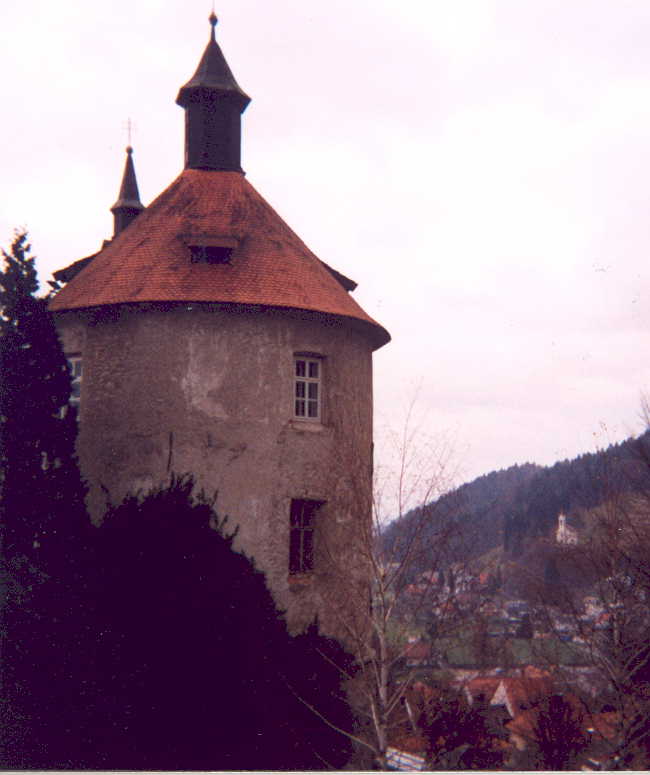
We have seen this same
"unscientific" approach applied to archaeology and anthropology,
where "scientists" simply refuse to prove their theories yet appoint
themselves as the final arbiters of "the facts". It would be naive to
think that the scientists who cooperated in the production of the PBS series were
unaware that there would be no counter-balancing presentation by critics of Darwin's theory.
Richard Milton is a science
journalist. He had been an ardent true believer in Darwinian doctrine until his
investigative instincts took command. After 20 years of studying and
writing about evolution he suddenly realised that
there were far too many disconcerting holes in Darwin's theory. Milton decided to try to allay
his doubts and prove the theory to himself by using at least the elementary methods of
investigative journalism.
Milton then became a regular visitor to London's famed Natural History Museum. He
painstakingly put every main tenet and classic proof of Darwinism to the test.
The results shocked him. He found that Darwin's theory could not even stand up to
the rigours of routine investigative journalism."
Let's take a quick look at Charles Darwin's Chapter 5 from his Origins of Species in which he quarrels with Agassiz over the blind human fish Proteus:
Let us again take one more look at Darwin's words on Proteus, from his own writings:
"It would be most difficult to give any rational explanation of the affinities of the blind cave-animals to the other inhabitants of the two continents on the ordinary view of their independent creation. That several of the inhabitants of the caves of the Old and New Worlds should be closely related, we might expect from the well-known relationship of most of their other productions. Far from feeling any surprise that some of the cave-animals should be very anomalous, as Agassiz has remarked in regard to the blind fish, the Amblyopsis, and as is the case with the blind Proteus with reference to the reptiles of Europe, I am only surprised that more wrecks of ancient life have not been preserved, owing to the less severe competition to which the inhabitants of these dark abodes will probably have been exposed."
One evolutionary branch of the human fish actually made it all the way to North America, to the eastern states where it lives in rivers and brooks right here in our own United States of Bush-Halliburton & Company [USA-BHC].
What about sex and rock[s] and roll "overs" [aquatic]?
Proteus becomes sexually mature at 14 years of age and starts to lay eggs at 16. Some live to be 100 years old and some can live without eating at all for over ten years!
The Postojna Cave system and Planinska jama cave of Slovenia are fed by the Pivka River and Unica River springs both belonging to the Black Sea, and not the Adriatic, which is much closer!
Slovenians also call their human fish the "Olm" and the "mocheril". Slovenia has perhaps the richest underground aquatic life in the world, given its relative size. Biotic and abiotic natural heritage are of equal importance for the conservation of Slovenia's biological diversity, two fine examples being Schwagerina carniolica and Pulsatilla grandis.
Digressing just a little bit, while the essence of Slovenia is still inside of me, i.e. Slovene pear brandy, either Sadjevec or Viljamovka, brand names, gets one in the mood to listen to ancient Slovene woodwind music ... the flute from Divje Babe discovered in 1995 near the Idrijca River opposite the karst cave region village of Reka, Slovenia, is dated from 43,000 BC !!! [okay, radio carbon dating is often false, so let's say at LEAST as far back as 4500 BC]. The flute was made from the tubular section of a thighbone of a cave bear cub. This flute is a Neanderthal artifact, and far too old to be a much younger Cro-Magnon flute.
JUST A LOT OF LIMESTONE BLUSTER, OR ARE WE BEING GYPSUMED?
So! Just what is the buzz about this karst stuff? Karst has been called kalk by some. Kalk is also called mortar, lime, creta. One also encounters ejecta blankets from crashing meteors, or volcanic tufa and gypsum and sulfur carbonate [or ash heap matter from a pre-historic nuclear strike?] which also have some of the same properties.
There are many marbleized and fossilized trees in Slovenia that are a very welcome sight to behold, especially after the sterile aluminum silicates of Dobrova! Solid limestone is much less porous than granite. Volcanic rock is very very porous. Even today, at present, no good theories explain the oddities of karst cave systems, nor their anomalies, such as the confusingly varied and "unrelated" substances called dolomite and chalk and karst and tufa and kaolin and calcium carbonate and gypsum [you may be able to tell by now that I am not a trained geologist].
The Postojna cave is located in the Maastrichtian limestone breccia at the extreme northern limit of the tectonic unit of the Inner Dinarides [Slovenian basin]. Micritic limestone and marine cretaceous cement, along with organogenic coral barrier reef, in addition to a little greenish grey marlstone, make up its solid contents, with inlays of dolomite.
Small "scallops" are often found on the karst cave walls. The water has a high level of carbonate and potassium, thus it is very hard water. Sulfur and chloride are in the water also. Ceiling "cups" which look like ulcers can be frequently observed. The mixtures of sulfur and water create cave cracks and mazes, with spots of gypsum and tuffa.
SOMETHING VERY EARTH SHATTERING HAPPENED HERE long ago in a struggle between the 3 or 4 main Secret Society Orders of our planet, it seems to me:
LET'S EXAMINE SUCH NOTIONS BELOW:
The Knights Templar had their headquarters during at least 3 of the Crusades on Cyprus, the island, near Turkey, and lived amont the Cypriots.
The Hospitallers Knight Order was shortly afterward headquartered on Malta.
The Order of the Teutonic Knights had their headquarters in Transylvania during the Crusades. Later they moved to Marienburg.
Each of the three orders had mysterious connections [or a very prominent LACK of them] to "pseudo-marine" and "faux dolomite", non-crustacean deposits, which means something very significant, but I don't understand it yet and few investigators or researchers ever delve into these enigmatic puzzle pieces in a satisfactory manner.

LEGENDARY SLOVENIAN Knight Erasmus Luegger of the Slovenian Predjama Castle in the karst region is a kind of national legend learned by nearly every Slovenian school child, but he was of an "unknown" knightly order. Could he have been with a lost Atlantean order, that is not one of the three mentioned above?? [and he was clearly not a Knight of the Occult Sufi Order either].
[transcription of my notes made during my own
Slovenian Museum of Natural History tour [with dictaphone in hand] of the human
fish and karst cave rocks galleries, a visit made in early Dec.
2003]
--->>> these notes below written on
Saturday, December 27, 2003 in a warm apartment 3-weeks later in Washington
DC, as i was transcribing my narrated notes which i had made into a dictaphone in the natural museum three weeks earlier
+ -----> I fell asleep leaning
against an ancient Roman column in Ljubljana on the main riverbank at 4:30 AM in the
30s [F] temperature [freezing]!!
+
bone chilling
disturbing river fog had set in
+
walked up the river
even further and found an abandoned Yugo old communist made car
+
a lot more comfortable
inside the Yugo than out in the cold -- moisture and fog all over the interior
windshield from my warm breath
+ -----> reminiscing over the 19
year old delightful female Austro-Slovenian opera singer who shared stories me at the youth hostel pub
last night!
+
looking forward to
seeing the human fish again tomorrow at the caves
+ -----> must do more research
in the Slovenian National Research Library soon
END OF BRYAN ADRIAN'S travel essay and notes!
-------------------------------
FURTHER BACKGROUND below has been compiled and assembled from a large number of URLs on the internet, for your perusal and examination.
ADDENDUM ON THE HUMAN FISH:
* human fish is a blind cave salamander
sense of taste, smell, and hearing are very developed,
but not as much as its sense to detect electro-magnetic fields
the human fish breathes through three-branched
gills on either side of its head that glow bright red from hemoglobin
the human fish feeds on blind cave mini-shrimp,
grain of sand in size
it lives in a secretive and nearly inaccessible
living environment!
Observations while inspecting the famed rock and mineral collection in the Ljubljana Natural History Museum, Slovenia:
Fauna from these karst caves are just as intriguing as the flora. Here are a few of the denizens you might find in the total black darkness.
** Stone marten rodents; lesser horseshoe bats; herald moths [Scoliopteryx libatrix]; Sphodrine ground beetles, sometimes in plague like numbers similar to locust invasions, aka Claemostenus schreibersi; pseudo scorpions, Neobisium spelaeum; giant cavern spiders, Meta menardi; whiskered blind bats and brown long eared blind bats; mites and beetles that eat bat shit guano, called guanobites; giant cave wood lice; today, unfortunately, swarms of water lice are infesting the caves, called Asellus aquaticus aquaticus.
** Bat guano is an excellent source of phosphorous. Cremating a human produces about 3.1 pounds of phosphorous from its skeleton. Guanobites of karst caves live off of bat guano excrement as their nourishment.
** Phosphorous is insoluble in water and ignites in air so it must be stored in water. It is soluble in ether and turpentine and some sulfur compounds.
** Scientists at the University of Akron, Ohio have proven that there is no special nor unusual magnetic property associated with the Slovenian karst, chert or gravel. Sediment from Postojna was tested at Pittsburgh Paleomagnetic Laboratory and it measured normal polarity, thus bearing absolutely no unusual magnetism.
** There is karst similar to the Slovenian karst matter in the Yunnan cave regions of southern China. Slovenians are helping to fund the exploration today of the South China karst called the Yunnan Karst Project. This includes the Yunnan Stone Forest and the caves beneath it. Yunnan is 25% karst terrain. Slovenia is 75% karst region. Unlike Slovenia, the underground streams of Yunnan are shallow. Both regions have green watered streams.
** The ancient Pannonian Basin is in current day Slovenia and the nearby regions of Hungary and Slovakia and was the home of the ancient Celtic tribe the Boii. Emperor Trajan divided Pannonia in two during his reign. There are ancient ties to this area in Poznan, Poland, and Bolzano, Italy, where the world's oldest mummy was rather recently unearthed under the ice.
ROCKS of the Karst
region and other unique regions of the globe:
- lots of fluorites are from Czechoslovakia; also, green
malachites; mauve and purple colored rocks too
- Northumberland rocks from caves of England contain chalcedony
- Hematites abound from Italy; Bavarian opals have
interesting striations; pyrites from Italy shimmer like
gold; amazing similarities between Icelandic and Sicilian volcanic rock debris;
graphite from Moravia is not uncommon; ditto for barites from Slovenian caves; cinnabars found in some odd rocks; meteoric
iron ores often found in ejecta blankets, like on Mars
PROTEUS ANGUINUS
A troglobiont -- with two sexes and gender reproduction
Systematics: subphylum Vertebrata,
class
Amphibia, order
Urodela, familiy
Proteidae; genus and species --
cave salamander
Proteus anguinus is a true troglobiont. It is an
amphibic salamander, living only in the Dinaric Karst,
the karst areas along the Mediterranean Sea from
Trieste in Italy to Herzegowina. It can only be found
in this region, it is a so-called endemic species.
Additional occurrences, in the Harz in Germany, in
Moulis in France or in Grotte Oliero in Italy due to
human intervention. During several hundred years of
research numerous human fish specimen have been "relocated" for
scientific purposes.
The Proteus in the Dinaric karst is a vestige of a
Tertiary familiy of amphibians. It is today nearly
extinct with only six remaining genuses world wide.
Proteus was known by Charles Darwin, who writes about
cave animals in chapter 5 of his book The Origin of
Species: Effects of Use and Disuse. He calls them
"wrecks of ancient life".
----------------------------------------------------------------------
The Predjama Castle near the Caves
A few kilometres from the entrance to Postojna cave stands
one of the most picturesque buildings in the whole of Slovenia. Predjama Castle
hangs dramatically in the middle of a 123 metre cliff ? a four storey structure
almost arrogant in its simplicity -- unconquered and uncompromising. Although
the current building dates from the end of the 16th century, a castle has stood
on this site since the year 1201.
It does not take much imagination to see how Predjama castle
would be the ideal stronghold for a wilful, rebellious knight ? and a curious and
romantic legend of this nature survives: the story of the robber baron Erazem, aka The Knight Erasmus Luegger, of the Order [Teutonic/Templar/Hospitaller--to be determined], who bravely fought Ravbar's soldiers [of the Ulrik/Ullrich/Allrich family order of warriors??] and who is
today commemorated by the recently opened Erazem's Passage.

LEFT -- The Knight Erasmus Luegger, of the Order [Teutonic/Templar/Hospitaller--to be determined].
From his stronghold Erazem Luegger, a 15th century baron in the mould of Robin Hood [who in real life was drained of all of his blood in a treacherous ploy by a Cisterian nun in a monastery near Nottingham Woods] ... Erasmus had held out against the Austrians of his time, taunting them and raining down fruit and animals on them much like John Cleese's knights in 'Monty Python and the Holy Grail'. The Austrians were baffled by Baron Luegger's unlimited supply of these edibles from numerous secret passages through the karst caves beneath his castle and beyond. Erazem met a paradoxical death too, crushed by a cannonball as he sat on the toilet in his castle, having forgotten to have closed the door.
His castle is well
worth a visit, as is the underworld below the
castle. It is an adventure whether you are a caver, a tourist ? or just plain curious.
The pure H2O watershed Soca River, near Trenta, with its mysterious plant called the "Scabiosa trentae" has also held captive the interest of many scholars and noblemen throughout time, especially Dr. Julius Kugy. A large mercury mine has been in the area for millenia and over 10 blind bat species live in the surrounding karst caves. Paradoxically, the famous artifact of elegant Neanderthal artistry, the Divje Babe bone flute, was found nearby. Many battles have been fought in the surrounding mountains in which bloody slaughters took place, the most recent was during World War I. Many gloomy military cemeteries adorn the lovely forested environs.
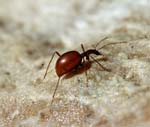



Watch out for those needle nosed karst cave BEETLEs, the "Leptodirus hochenwartii"!! Are those needle noses for siphoning red fluid from other organisms?
As early as 1689 the famous chronicler Baron Valvasor wrote of the province of
Carniola, mostly located in southern Austria. Baron Valvasor wrote about the fear and astonishment of local
inhabitants when an immature "dragon's offspring" was found at a
water source near Vrhnika. A postman, a certain Mr Hoffman, even took it home
and put it on display. The Baron admitted that the so-called dragon "was
only a hand span long and looked like a lizard and spoke in taverns that it was no more than an underground worm
and vermin of the kind that is common in some Carniolan and Slovenian and Croatian parts. People had long forgotten about the terrifying Vrhnika monster when in 1751 an enterprising
fisherman caught a 5 four-legged fish as white as virgin snow.
When he tossed them out
of the net they started "screaming and squealing." People
were used to fishermen's tales even then and did not get particulary excited
about them. Of course we should not swallow hook, line and sinker all the apocraphal stories of
dragon's offspring and squealing fish and in this day and age we can be absolutely sure that
in both cases only one creature was responsible for all the excitement - our dear little
Proteus anguinus.
In terms of the construction of its body the human fish is a
member of a family of amphibians, Proteidae. The family
comprises only two genera: Proteus, with one species living in the water
of the Dinaric Karst in the area from Slovenia to Herzegovina, and the other Necturus,
indigenous to surface waters in North America along the eastern states.
The human fish, or known locally in Slovenian as "mocheril," (etymologically, 'that
which burrows into wetness'), is the only cave amphibian classified and is the largest of
true cave animals -- that is -- those that can not hope to survive outside of the caves.
One of
the main characteristics of amphibians is metamorphosis; the larvae of tadpole living
in water and breathing with gills develop into adult animals which leave
the aquatic environment and then breathe with lungs like a land animal. But the
human fish appears not to complete this metamorphosis. It reaches sexual
maturity as a larva. So far, science has still not entirely explained "neoteny,"
as this phenomenon is called. But one thing is certain, namely, that this
peculiarity is somehow connected with the production of the hormone thyroxine,
in spite of the fact that proteus does not react to the substance in the way
other amphibians do. Scientists have attempted in vain many times to force the unfortunate
proteus to metamorphosize. The animal breathes all its life through gills although it also has rudimentary lungs.
The famous 18th century Swedish scientist Karl von LinnéŠ (Linnaeus), whom many refer to as the "father of systematics", regarded the human fish as a larva. He did not include proteus in his natural order as an
independent animal species and for this he made a colossal mistake. In 1772 he was challenged by Giovanni A.
Scopoli, a physician at the Idrija mercury mine and a well-known natural
scientist, who wrote to him: "Respected Linnaeus, to whom I sent the picture, is
of the opinion that it is the larva of some lizard." And he added:
"...mihi videtur genus singulare... I feel that the mocheril is a separate
animal genus." And he was right!
Scopoli could not keep his enthusiasm about the discovery of
this new animal species to himself. He sent several human fish preserved in alcohol
to scientists all over the world. He studied the human fish, drew them and was
preparing to make his great discovery public. In the meantime, a Viennese
doctor and zoologist, J. N. Laurenti, admired the completely unknown animal
which Scopoli had sent to a friend living in Klagenfurt. Before the meticulous
natural scientist from Idrija could announce his discovery, Laurenti beat him to the punch and entered history books from that day onward as the grand discoverer of a new animal species, our human fish.
He
called it "Proteus anguinus" after the shepherd of all beings of the sea, the Greek sea god Proteus, son of the uber sea-god Poseidon -- and his wife the nymph Naiad.
Scopoli was left empty-handed while Laurenti won the fame of the first discovery without even being certain
where his "discovery" had come from. He named Cerknisko
Jezero (Lake Cerknisko) as the place of his discovery which at the time enjoyed the fame of an Austro-Hungarian Loch Ness "monster". Despite his haste the
scientific name which Laurenti chose for the local "Nessie" has
stuck.
Aberration of Nature ??
Completely adapted to eternal darkness, the human fish hides
in the depths of underground sources far from our inquisitive gaze. The pale
skin of the human fish contains no pigment and the tiny eyes can be seen only at the fetus
stage. Later the eyes atrophy and skin grows over them. Approximately 25 cm long, [the length of an average human penis] with a flat tail surrounded by a skin-like fin used for swimming -- it is
snake-like and for this is has the Latin species name anguinus ("anguis"
means snake). It can also move using two pairs of legs - the front ones have three
digits and the hind ones two. The entire body is sensitive to
light and magnetic plasma. It breathes in three ways. It has an excellent sense of
smell and it also has a highly specialised sense for electromagnetic plasmas which could partly explain its orientation abilities in the total
darkness of the cave. On either side of its body, at the back of its head, there
are three pairs of extended gills which have excellent blood circulation and
are therefore of a very bright red colour.
In addition, it has simple lungs, and when
out of water it also breathes through its skin -- we must not forget -- that
almost absolute humidity prevails in the cave environment.
It eats small animals, such as cave shrimps, amphipods and
the larvae of various insects. Sometimes, under the cover of the night, human
fish swim to the cave exit where they hunt for small surface water animals.
Cannibalism is conceivable in starving mocherils if there is no other food around, but a full-grown animal can
naturaly only atack very very small larval prey, as its blunt muzzle and small teeth make
it no ferocious predator. Proteus has always caused great fascination since it
can remain in captivity without food for an incredibly long period [up to 10 years without food!]. Reliable
and documented reports by various observers are known about their ability to go
without food, the longest such period having gone on for the least 12 years. We know proteus' metabolism must be extremely deccelerated since the human fish
reaches sexual maturity only at the age of 16 to 18 years and it may even live to reach
the old age of 100!
A special chapter in the history of research into the human
fish deals with the mysterious question of the animal's reproduction. Divers
have swum through hundreds of miles and fathoms of siphons and underground lakes and researchers have
turned countless stones but so far nobody has seen where or how the life of
this mysterious creature begins. We can only assume that proteus reproduces deep deep
deep down in the peaceful and inaccessible watercourses of the karst
underground, as far away as ancient Atlantis.
THREATENED SPECIES
Proteus does not have a single enemy in its natural
environment and an adult animal can swim freely in the underwater labyrinths
without having to fear the slightest danger. But proteus does have one malignant enemy,
the worst and most ruthless of all -- man.
Due to the difficulty of access to the true habitat of
proteus in the karst underworld, and the high number of caves that have still
to be discovered and perhaps never will be, it is completely impossible to
estimate the size of the proteus population, both white and black. This
represents a considerable obstacle but we know that Slovenia is
the richest in underground aquatic animal life in relative terms -- and even in
terms of absolute figures it does not lag behind areas ten times larger, such as Croatia. A few years ago you had to watch your every step to avoid
treading on human fish in the Kocevje caves of Slovenia. Today not one remains. Dumping
all sorts of filth onto the surface of the Karst region is extremely risky, for
precipitation washes poisons underground in unpredictable directions. Proteus
has for a long time been on the list of the Washington CITES convention which
prohibits trade in rare wild animals. But unscrupulous dealers do not give a
second thought to this and the human fish has been shot up to the top of the endangered list and
appears regularly on pricey lists in Italian and Parisian shops for wealthy aquariumists. Even
biologists and many other scientists from all over the world use this
disreputable method to acquire human fish specimens for their research.
--------------------------------------------------------------------------------
There also exists an even rarer Black Human Fish!!
The Skocjanske jame caves have an extremely complex system of cave passages running a total
length of 5.8 km. The difference between the lowest and the highest points in
the caves is about 209 meters. The caves are the biggest and best known natural
phenomenon within this classical Karst area. With the shifting of sink holes in
the geological past, numerous collapsed dolines have formed at the contact
point where flysch meets limestone under the caverns.
With their depth of 163
meters, Velika dolina and Mala dolina charm even the most hedonistic of visitors. The finest view of
both dolines is from an observation point near their natural bridge formation and the cave that separates them. The caves, with an immense underground gorge and halls,
are the beginning of the Skocjan underground system.
The height of the gorge
exceeds 100 meters at several points. The caves probably have the biggest cave
hall in Europe, measuring 12,000 square meters (1.2 hectares) in cross section.
The Reka river runs underground for almost 40 kilometres, to the sources of the
Timav River in the Gulf of Trieste.
Within the Park’s protected area there are three
smaller villages featuring typical karst architecture: Skocjan, Betanja, and
Matavun. The entire village of Skocjan is especially interesting. It was once a
fort and with its village square and the church of Sv. Kancijan (St. Canzian) after whom
the caves were named it is considered a “#147;settlement monument”. There
are several archaeological sites in the territory of the Park from various
archaeological periods including settlements, burial grounds and cave sites.
Because of their special value they are included under the
protection of the cultural heritage act. Other points of interest are several stone houses with stone wells, portals, barns
for wheat threshing and storage, water mills, ice pits, and a cemetery with
crumbling tombstones.
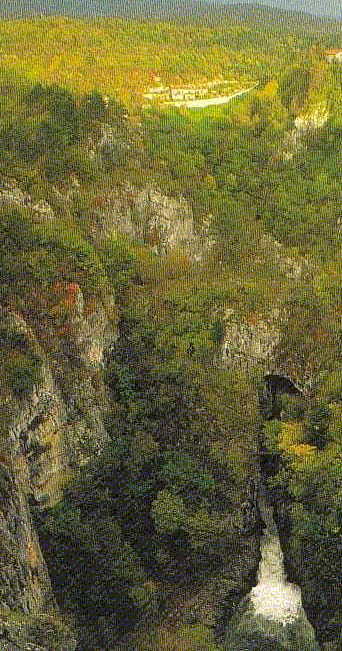
Because of the nearby Skocjanske
jame caves and their extraordinary significance for the natural heritage wonders of the world, in 1986 the Skocjanske
jame were included on UNESCOs World Heritage List. The Republic of Slovenia
pledged to ensure the protection of the Skocjanske jame area and therefore adopted the Skocjanske jame Regional Park
Act. The Park is managed by the Park Skocjanske jame Public Service Agency,
located in Skocjan, Slovenia.
The Skocjanske jame Regional Park is situated in the
south-western part of Slovenia, in the region called Kras, or Karst. Kras is
the area where researchers first began discovering typical karst formations,
karst caves and other karst features, and is therefore also referred to as the
original, or classical, Karst. The internationally accepted term used in
karstology for a steep-sided and flat-floored depression -- a doline or dolina --
owes its origins to the dolines of the Skocjan area (Velika and Mala
dolina), where the Reka river disappears underground yet another time.
=========================
The ?kocjanske jame Regional Park, which is situated in the
Divača municipality, extends over an area of 413 hectares and encompasses
the area of the caves, the surface above the caves, and the system of collapsed
dolines [and the Reka river gorge] to the bridge in ?koflje.
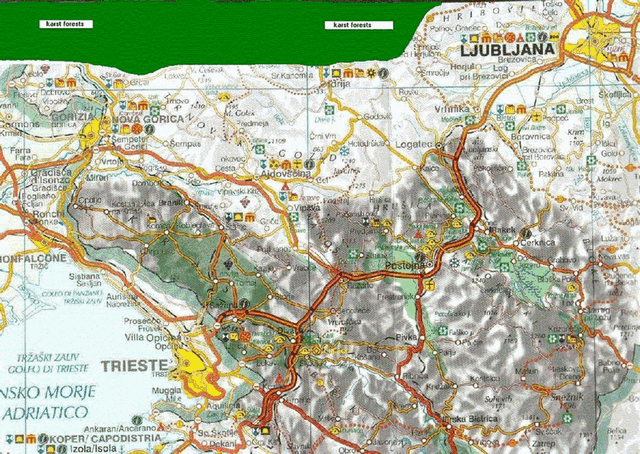
The boundary of the
Park runs along the Kozina-Divača highway on the west, embraces part of
the Divača Kras on the north, and in the south-eastern direction extends
to the foothills of the flysch hills of Brkini. When the metamorphosis of a river passes from
flysch to limestone it is called "contact karst,"
and the ?kocjanske jame caves
which are located in such a passage, are a unique example of this karst
feature.
Together
with the extensive system of caves the Park embraces collapsed dolines and individual cultural monuments, and
the Park makes up a typical karst "architecture". The unusual
climatic conditions in the dolines and at the cave entrances account for the
blended presence of both Alpine and Mediterranean flora. The unique
concentration of plant and animal species cohabiting in such an extremely small
space gives this area a significant value in terms of biotic diversity. The
employees of the Park and the local inhabitants pay special attention
to the protection of the natural ecosystems and archaeological sites.
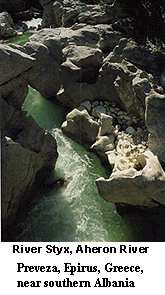 The River Styx Welcomes You !!
The River Styx Welcomes You !! 
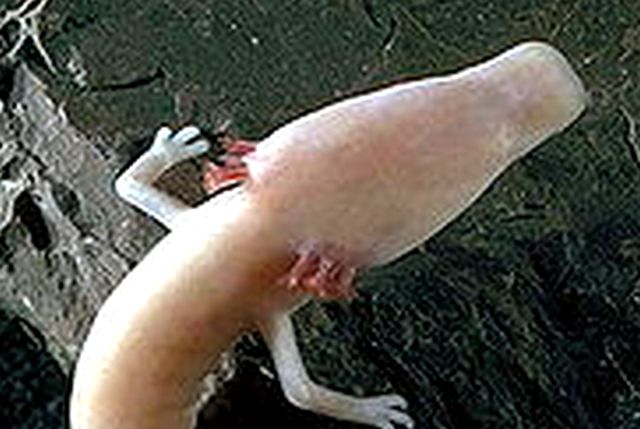
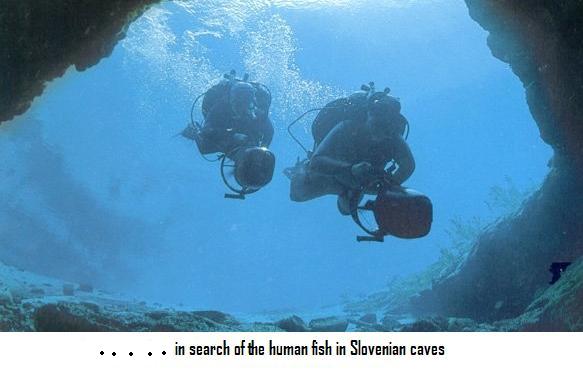
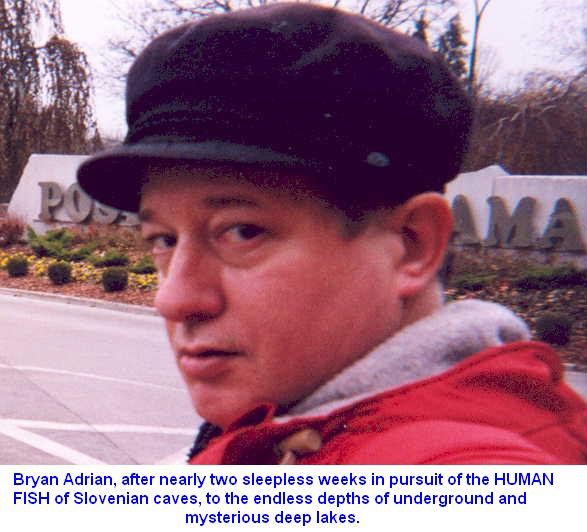
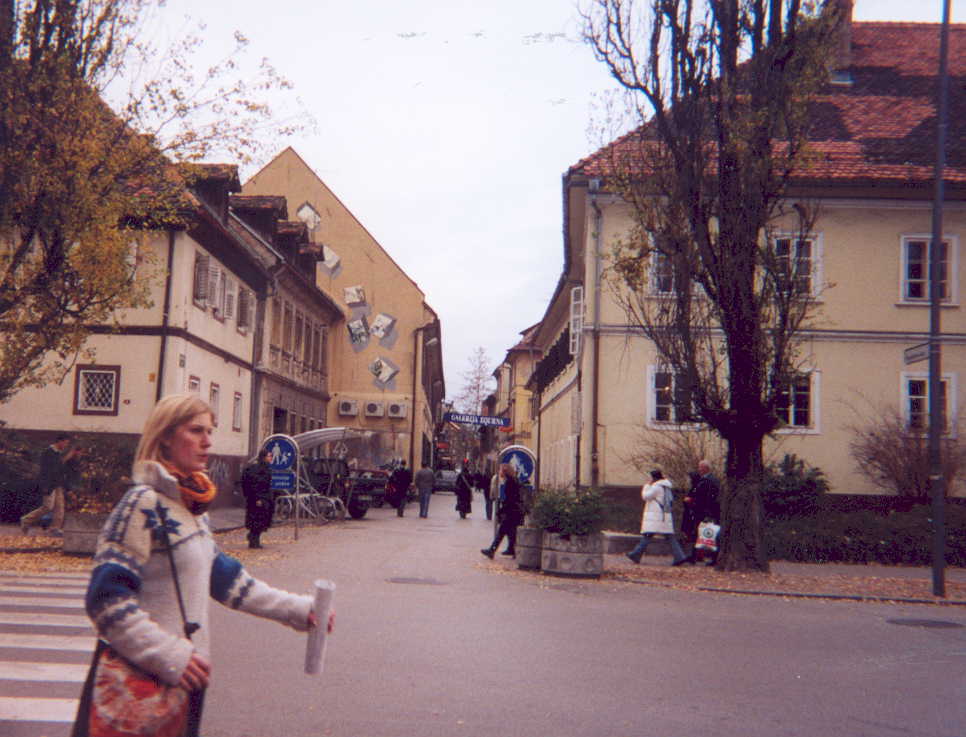










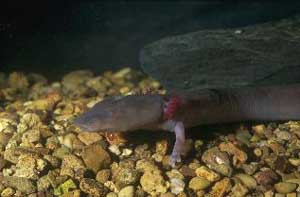



 " Who Will Drive a Stake Through the God of War?"
" Who Will Drive a Stake Through the God of War?"